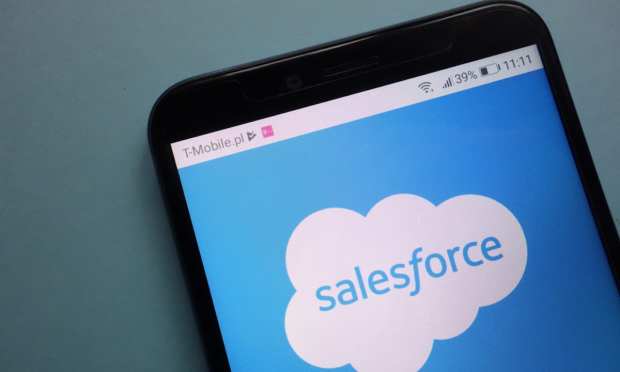Salesforce Unveils Loyalty Management Platform For Businesses As Online Sales Boom

Salesforce is rolling out a new product to let B2C and B2B companies easily add loyalty programs at a time when the company says online holiday retail sales grew 50 percent to top $1 trillion.
“Organizations with high levels of customer loyalty outperform their competition, so it’s critical that they provide their customers with valuable and memorable experiences to build trust,” David Schmaier, CEO of Salesforce Industries, said Tuesday (Jan. 12) in unveiling the company’s new Loyalty Management product.
The new system will enable businesses to easily build loyalty programs on the Salesforce Customer 360 Platform. “Loyalty Management allows companies across industries to evolve their loyalty programs from transactional to human-centric by delivering personalized, relationship-building moments to each customer,” Schmaier said.
The new product comes at a time when loyalty programs are increasingly important for businesses. Salesforce cited research that has found more than a third of U.S. consumers have tried new brands since the pandemic began, with 80 percent of them planning to stick with the new products even after the crisis passes.
“While loyalty programs can help companies develop long-term relationships with [such] customers and drive growth, many rely on outdated, fragmented technology that fail to provide integrated experiences and are unable to evolve with industry trends,” the company said in its announcement.
For example, Salesforce noted that many companies’ loyalty programs have failed to move away from traditional points-based rewards programs like airline miles, which customers don’t need during the pandemic. By contrast, many successful loyalty programs have switched to things like exclusive experiences and products.
Salesforce said loyalty programs that haven’t changed “end up offering little value to the business or the customer, and actually lower consumer trust instead of increasing it.” The company said its Loyalty Management product aims to fix that by offering such things as ease of customization and updating.
“Loyalty Management is built on the Salesforce platform, so businesses can design a variety of different programs that meet their unique needs, whether that is a tiered membership program or points per purchase,” the company wrote.
For example, Salesforce said that a hotel chain could easily customize offerings to each local market “to account for different experiences and amenities, such as tickets to a local professional sports game or a local winery that offers tastings.” The company said businesses could then “evolve these offerings over time based on popularity and seasonality without having to rewrite code or update antiquated back-end systems.”
Salesforce said the system’s other advantages include the ability to personalize loyalty offerings to different customer segments, as well as to integrate programs across an entire company and easily measure a loyalty offering’s performance to flag shortcomings.
Online Holiday Sales Topped $1 Trillion
The company is rolling out Loyalty Management at a time when online retail sales are booming. On Tuesday (Jan. 12), Salesforce separately released its 2020 Holiday Shopping Report, which found that digital spending rose 50 percent year over year during the holiday season to hit $1.1 trillion worldwide. That’s up from $723 billion during the same period last year. Salesforce added that U.S. online holiday sales grew 43 percent to reach $236 billion, up from $165 billion a year earlier.
The company compiled its report by analyzing its data on purchases made by more than one billion shoppers in 40 countries worldwide between Nov. 1 and Dec. 31. The study found that sporting goods and home goods saw the biggest percentage gains during the season, with revenues for each rising 108 percent and 89 percent, respectively.
Other high-growth areas included the food and beverage category, which saw sales rise 80 percent. But even the slowest-growing areas saw double-digit percentage gains on revenues, with active apparel adding 35 percent and footwear gaining 39 percent.
Curbside and BNPL Are Booming
Salesforce also found that options like curbside pickup and buy now, pay later (BNPL) were hot.
The company found that U.S. retailers offering such options as curbside, drive-through and/or in-store pickup saw digital revenues grow 49 percent year over year on average, versus just 28 percent growth for stores that didn’t. Such stores also saw 54 percent year-on-year online sales gains in the five days leading up to Christmas, while those that didn’t offer such options only enjoyed 34 percent annual gains.
“With strained shipping systems and consumers prioritizing safety, retailers with curbside, drive-through and in-store pickup options outperformed those without these services,” Salesforce wrote.
The study also found wide adoption of BNPL options. Salesforce said BNPL usage gained 109 percent year over year during the holiday season, with the greatest year-on-year increases seen during the week before Christmas.
